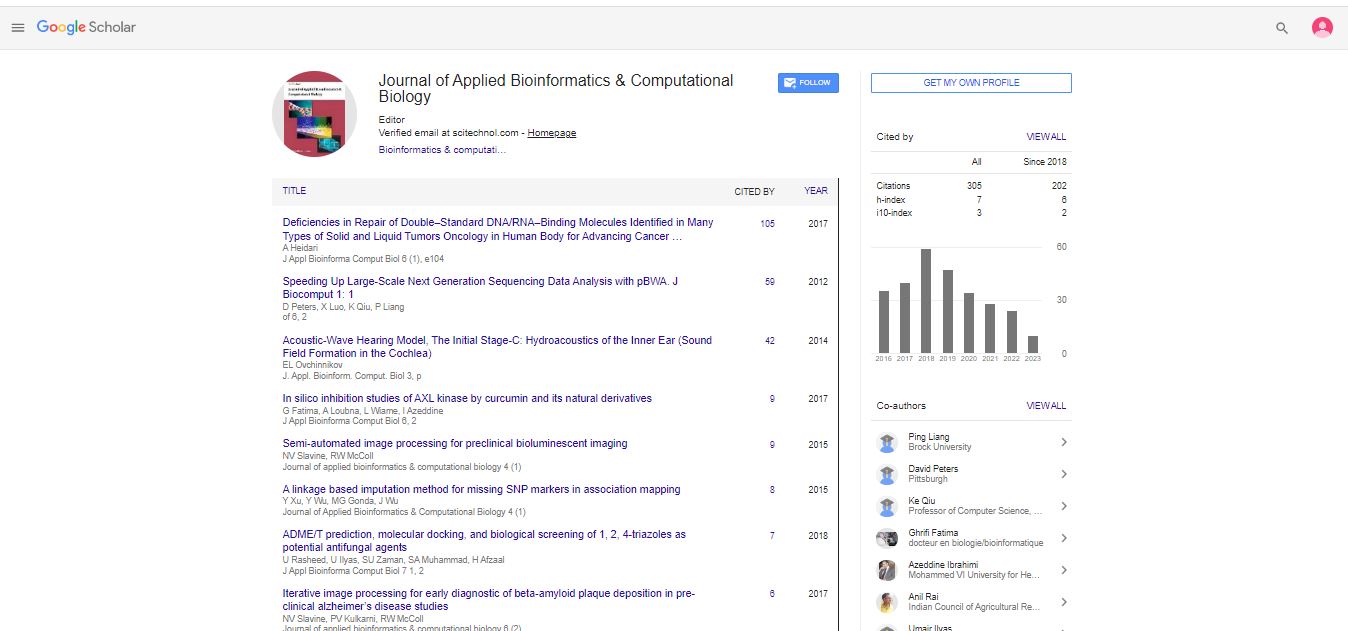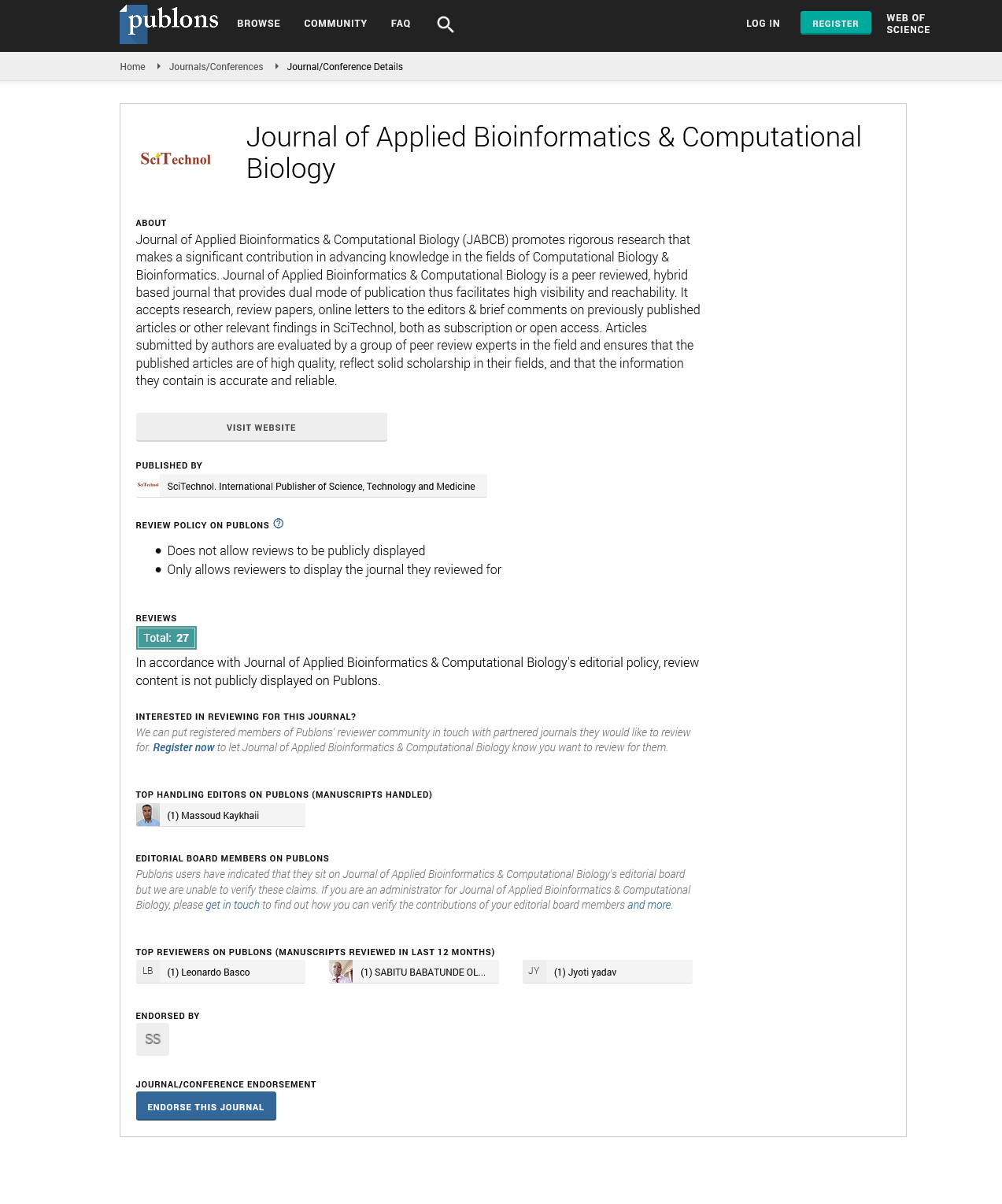Enzymatic preparation of nanostructured supramolecular assemblies from biological macromolecules
Jun-ichi Kadokawa
Kagoshima University, Japan
: J Appl Bioinforma Comput Biol
Abstract
Biological macromolecules, such as polysaccharide and protein (peptide) exhibit specific in vivo functions in living systems, which are appeared by their controlled primary and higher-order assembled structures. Many kinds of conjugates, which are assembled from such biological macromolecules, are present as vital materials in nature. Therefore, artificial assemblies from biological macromolecules can be expected as new bio-based functional materials, which have a potential for practical applications in biomedical and tissue engineering fields. Polysaccharides are known to form nanostructured higher-order assemblies by non-covalent linkages such as hydrogen bonds. Accordingly, the construction of hierarchically assembled structures, so-called supramolecules, from polysaccharides has attracted much attention to obtain new polysaccharide-based functional materials. For example, amylose, which is a linear polysaccharide linked through α(1γ4)-glycosidic linkages and wellknown as a component of starch, forms regularly controlled assemblies, that is, inclusion complex and double helix, depending on whether guest compounds are present or not. Amylose with well-defined structure is synthesized by phosphorylasecatalyzed enzymatic polymerization using α−D-glucose 1-phosphate (G-1-P) and α(1γ4)-oligoglucan (maltooligosaccharide) as monomer and primer, respectively. As the polymerization is initiated from the non-reducing end of the maltooligosaccharide primer, the enzymatic polymerization can be conducted using primers covalently linked to other polymeric materials (immobilized primers) at the reducing end, giving rise to amylose-grafted bio-based polymeric materials. By means of the property of spontaneously double helix formation from the enzymatically synthesized amylose, the phosphorylase-catalyzed enzymatic polymerization using the immobilized primers produces supramolecular assemblies comprising the double helix cross-linking points. For example, the phosphorylase-catalyzed enzymatic polymerization using the immobilized primers on chitin nanofibers was investigated to produce amylose-grafted chitin nanofiber assemblies. Owing to supramolecular network structure by the double helix cross-linking points, the product formed hydrogels, which were further converted into porous materials with controlled nano- and microstructures by lyophilization.
Biography
Jun-ichi Kadokawa received his PhD in 1992. He then joined Yamagata University as a Research Associate. From 1996 to 1997, he worked as a visiting scientist at the Max-Planck-Institute for Polymer Research in Germany. In 1999, he became an Associate Professor at Yamagata University and moved to Tohoku University in 2002. He was appointed as a Professor of Kagoshima University in 2004. His research interests focus on polysaccharide materials. He received the Award for Encouragement of Research in Polymer Science (1997) and the Cellulose Society of Japan Award (2009). He has published more than 200 papers in academic journals.
E-mail: kadokawa@eng.kagoshima-u.ac.jp
 Spanish
Spanish  Chinese
Chinese  Russian
Russian  German
German  French
French  Japanese
Japanese  Portuguese
Portuguese  Hindi
Hindi 
